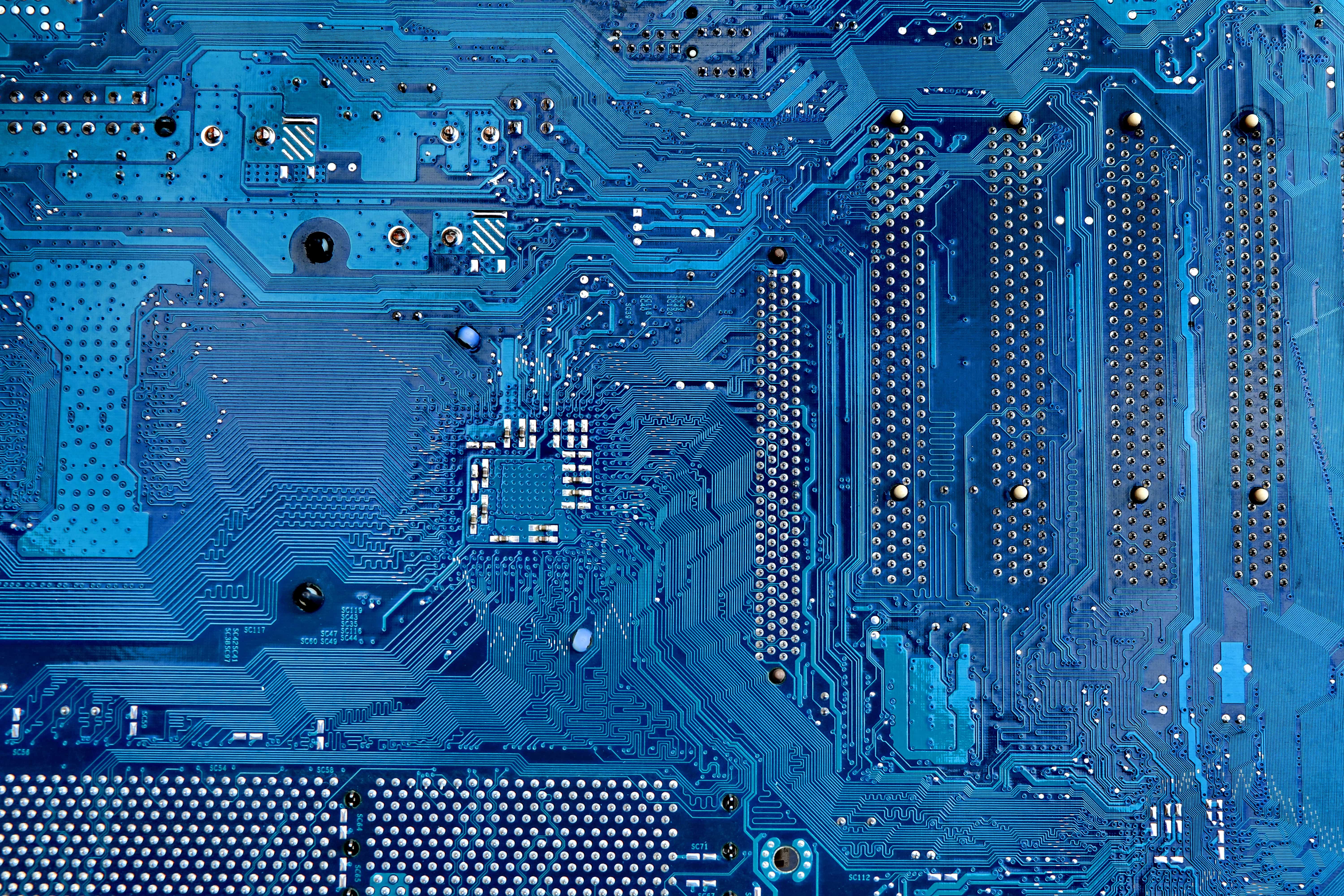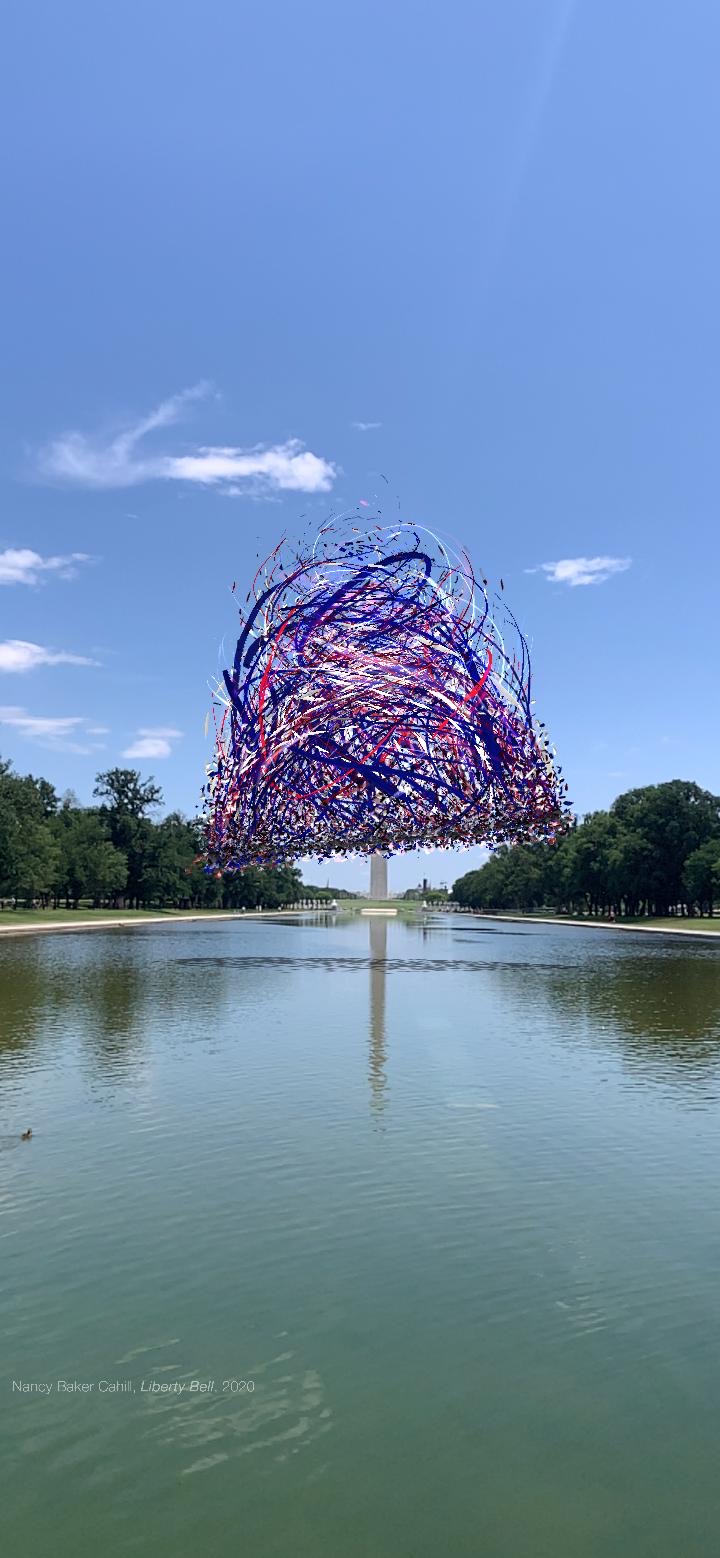Over the summer of 2021, Oxy Arts hosted Encoding Futures: Speculative Monuments for L.A., an artist residency where four artists, Nancy Baker Cahill, Audrey Chan, Joel Garcia, and Patrick Martinez, were commissioned to create original, site-specific augmented reality monuments for a future Los Angeles. You can read each of the artists' reflections on their process in this series of articles and learn more about their projects here.
A few weeks ago, as my partner and I were headed to Logan airport, I glanced out the car window and saw something I’d never seen before in Boston; a rising blood red sun. The scarlet was so superlatively saturated and unnatural, I was mesmerized. In Los Angeles, we are accustomed to a technicolor sun. Our wildfires and pollution have long altered what we consider natural. I grew up in Boston and I’d never seen a red sun over the Mass Pike in my life. The beige skies were hazy with wildfire air that had drifted across a 3,000-mile expanse from our burning west coast to their green east coast. It struck me at once how connected we are, and how it should matter to one coast/state/city/village if another is suffering. The tempting relief of thinking, “I’m so glad that didn’t happen here,” is a pyrrhic victory. Our tragedies have consequences beyond our borders, and this applies everywhere. We are all impacted in visible and invisible ways.
The surreal moment in Boston prompted me to reflect further on our inalienable interconnectedness and interdependence, and on how we might survive our collectively imperiled future. Many conversations I’ve had recently touch upon the overwhelming list of existential threats to democracy, to climate stabilization, to sentient life itself. Entangled in all of these conversations is the critical role that technologies, wielded recklessly or thoughtfully, have played in accelerating or mitigating these challenges. Corporations and governments exhort us to take personal responsibility while remaining unaccountable for their outsized impacts. This asymmetrical accountability leaves us as individuals overcome with guilt, fear or distrust. We know these challenges are too big for any one of us to solve, so we continue to participate in the systems that harm us.

Motherboard, an AR future monument, appears as an abstracted human spine flanked by arterial, network-like structures fanning out from either side, hovering above Los Angeles City Hall. I selected this site as a symbol of dysfunctional centralized local governance and community care gone wrong. Some of the most formidable challenges we face as a city are mirrored on a national level; a lack of shared civic and educational resources, an extreme wealth gap, unaffordable health care, food deserts, shade from the sun, limited affordable housing, gentrification, absent sanitation, biased policing, among others. None of these inequities occur in a vacuum, they are systemic, interrelated, and have developed over centuries from the colonizing origins of this country. In imagining a speculative future monument, I had to consider these current concerns in aggregate. Motherboard is inspired by models of efficiency: generative, decentralized computing power, the body itself, and other organic systems of support and communication present in tree roots and mycelium networks.

BruceBlaus, Spinal Cord, 2013. Source: wikimedia.org. Image provided by the author. This image is in the public domain.
Mycelium, fungal colonies that form the connective tissue of all carbon-based life on earth, communicate warnings, transfer nutrients, and signal shifts in ecosystems to an infinite number of plants and organisms. As famed mycologist Paul Stamets says, “Mycelium is the mother of us all.” These largely invisible networks, similar in appearance to human neural networks, operate without the hierarchical bias so endemic to the human-centric, capitalist, and hetero-patriarchal societies of Western traditions. The Internet is often cited as an example of biomimicry - it appears much like visualizations of mycelium. The irony is that while we are “connected” to each other online, in the metaverse, or in any dematerialized shared space, unlike mycelium, we lose the essential recognition of each other as fellow humans facing a shared series of crises.

The motherboard, which often resembles a small city with its interlocking nodes and threads, is the backbone of any computer. It, like our human spines, connects systems and acts as an essential, multi-nodal infrastructure and armature. In both cases, without the networks they service, nothing functions. I thought of what it is colloquially to have a spine, and to be spineless in light of rampant misinformation, deceit and corruption. This monument is a love letter to functioning backbones, to true “trustless trust” and to empowering interoperability. Author Maggie Nelson has described being “mothered by many,” and this monument springs from the poetics of a similarly de-gendered concept of nurturing, healing, fortifying, protecting, and providing of sustainable life. It re-imagines a redistribution of power, connected to policies which honor individual agency, mutual accountability and collaborative governance. It offers an ever-expanding ecosystem and a responsive restructuring of civic engagement, production and mutual aid.
As part of my practice, I think obsessively about technology and ethics; the unintended negative externalities, the moral imagination1, they demand, the fluctuating protopic/dystopic potential of partnering with AI. While I don’t think we are yet living in an algocracy, algorithmic bias, Ad tech (advertising technology) and the data extractive tools of surveillance capitalism have led to two distinct cultural threats. The first is epistemic: witness the manipulated realities that ensued in the wake of Cambridge Analytica and the 2016 election. The ongoing erosion of a consensus reality has led, quite literally, to a denial of science, distrust of institutions, abnegation of personal responsibility, and ripe conditions for extremist violence. As any kind of epistemic justice atrophies, so too do shared values, such as community, love, compassion, and being present. The second relates directly to how we perceive ourselves in or out of community. With desires mapped, predicted, and algorithmically curated for us as individuals, we enter the perilous condition of what philosopher Rosi Braidotti calls, “hyper-consumeristic progessive individualism.”2In other words, when all perceived needs are addressed by technology, why would anyone care about or even notice the most vulnerable populations suffering the effects of systemic oppression? I would add, in the case of the red sun, why would we care about an entire region on fire, or countless other harms to Earth and its inhabitants? These are two results of technology being deployed with none of its transgressive or empowering potential. Hyper dependent on consumerist technologies, many of us are better controlled and contained; knowing, thinking and voting less while spending more and ignoring the welfare of others. Motherboard acknowledges the key of multiple relational bonds, relational systems, and the core truth that whether we want to or not, we belong to each other and our survival depends on this epistemic reckoning. This monument proposes connective, hybrid organic human/AI tissue between types of labor and insight, strengths and weaknesses. We could re-humanize ourselves, paradoxically, if we wielded the tools of AI thoughtfully and without bias.

Motherboard exists as a love letter to systems outside of the heteropatriarchy, a rejection of monocultural dominion. A project of decolonial feminism, it aims “ to facilitate transborder and international alliances,” while modeling hybrid systems of support in Los Angeles.3 This artwork aims to generate alternate imaginings of thriving and equitable communities, valued plurality of cultures and contributions, mutual care, and ultimately, healthy survival and growth.
The root of the word matrix is ”source or origin” and in Latin, simply, “mother.” Motherboard pays homage to a newly imagined matrix that might offer a way out and through the soaring inequities and challenges to authentic connection we face. What would a new operating system look like under these future circumstances? What if instead of complying with the laws of late stage capitalism, we maintained individual agency yet participated collectively in something that served a greater good? I believe that systemic change will depend on reclaiming our consciousnesses, looking to thriving regenerative networks of support that already exist in nature, and partnering with technologies freed from the most damaging of our entrenched human imperatives. The monument’s butterfly-shaped “wings” suggest an abstract embrace. Imagine the butterfly effect of such a future system.
